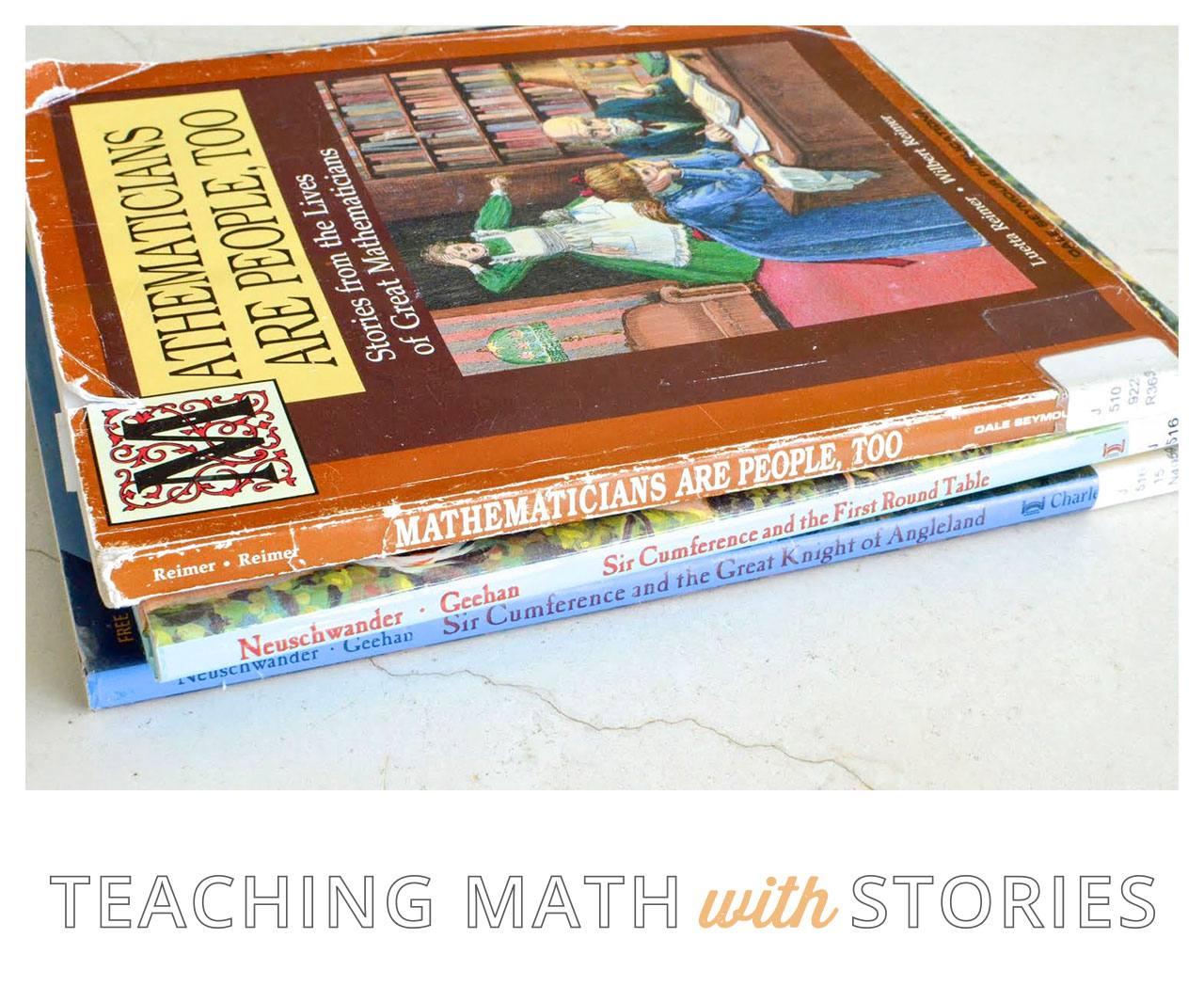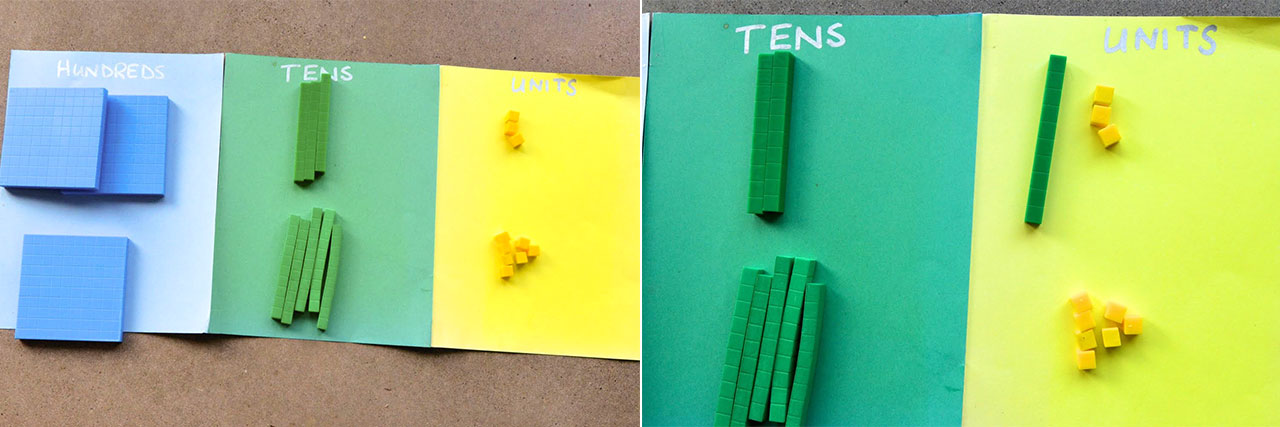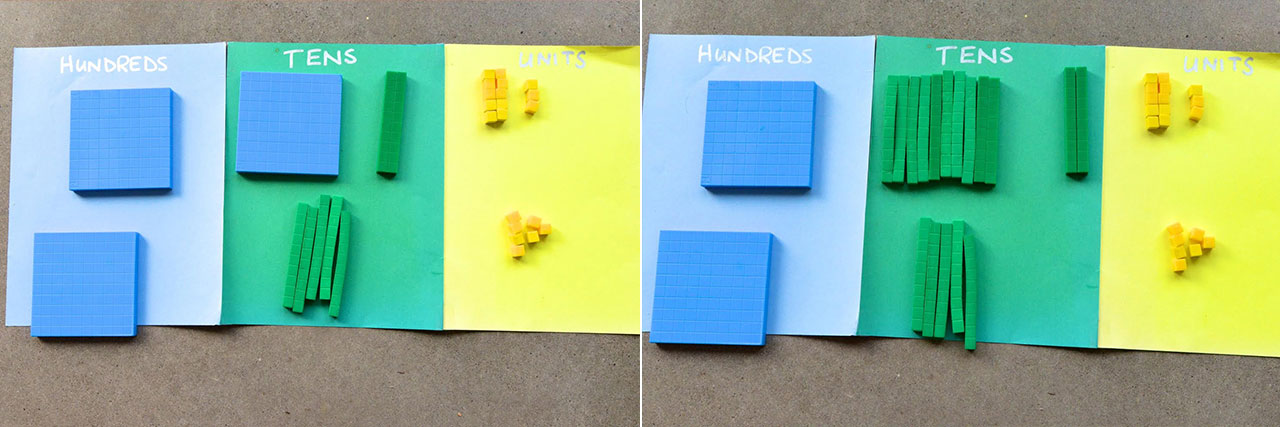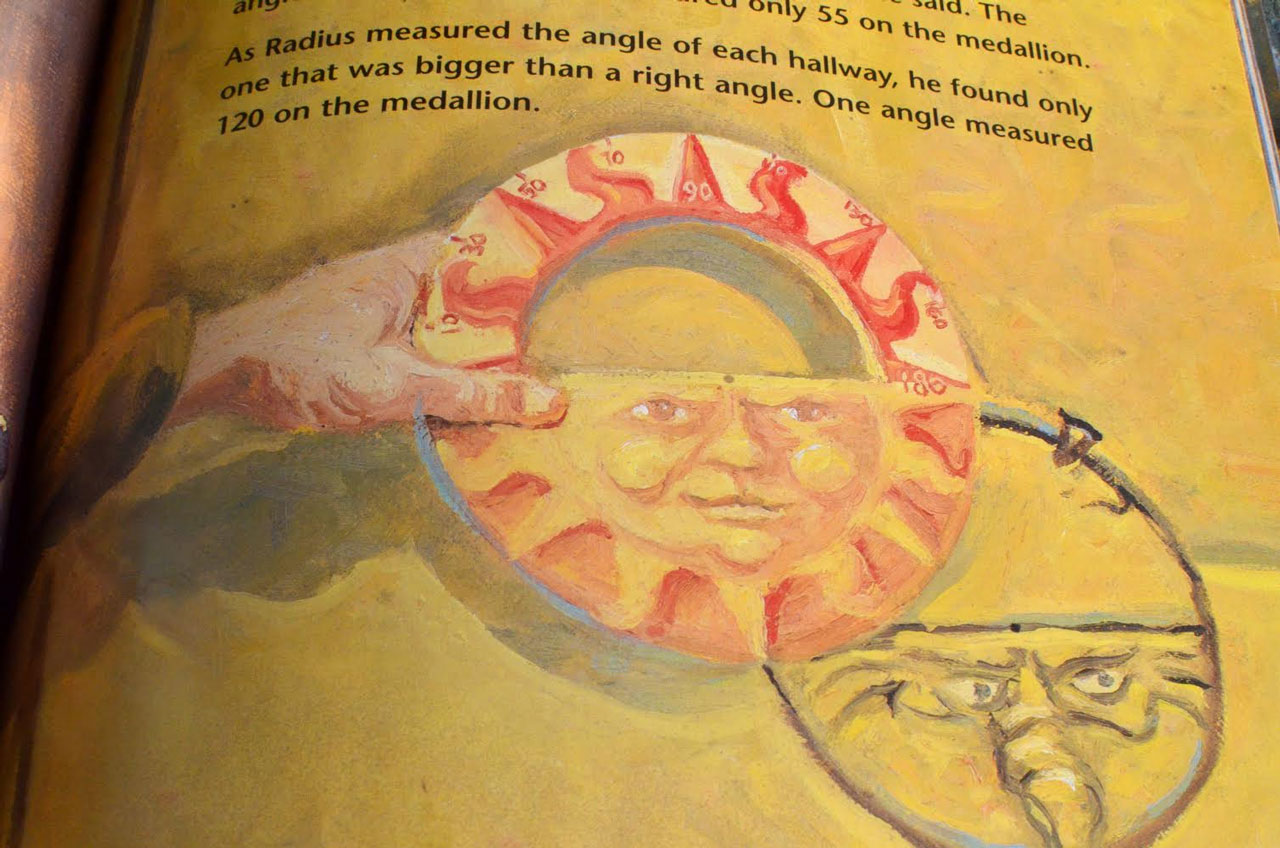Teaching Math with Stories
I was teaching my son triple digit subtraction (oh so fun) when I realized he had hit a wall. He couldn’t grasp the rules of where the numbers needed to go, the order, the borrowing, it was just a big mess of crazy. So I slowed things down and tried working with our manipulatives. That helped, but he was still having a hard time understanding the order of precedence when it comes to borrowing. I set it aside and got to thinking.
Our math manipulatives are color coded, so units are yellow, tens are green and hundreds red, which is pretty standard. So I made a three part presentation card out of three matching colors of card; that way, when a multiple moved out of it’s column (a ten into the units for example) it was a different color from those around it. This helped to signal that the ten needed to be converted into units so that it was the right color again.
The next step was to create a narrative to explain the borrowing process. My son responds really well to stories so I thought this would help. So when we came across a problem where borrowing was necessary ( 256 – 179 ) we worked through the story to explain the borrowing process. It went like this…
Okay, so we have these numbers:
256
179
So the bottom number is the one we are subtracting, so the first number is 6-9, can we do that? (No) Okay, so 6 needs to knock on next door (Hello! Please can you help me I need some more numbers!) and next door sends over a ten (Of course, I’ll come on over). But when 10 arrives she is a different color from the others, that won’t do at all (Oh I’m so embarrassed!) so we change her into units, now we have 16 instead of 6.
The same applies when we need to subtract 7 from 5, we go knocking on the door of the hundreds column and ask for help (We need more numbers over here!) over comes the blue hundreds into the green tens column. Again, we convert 100 into 10 tens and now we have 15 from which to subtract 7. Much better.
By converting the maths problem into a story my son was able to find a rhythm to the numbers that had not been there previously. Adding in silly voices, colors and conversation took away the scariness and made it fun and familiar. Even now he still talks about ‘knocking on the door’ when borrowing a number, for him that helps a seemingly mysterious process make sense.
I’ve tried to include lots of math stories in our work to bring it to life, and I’m always on the lookout for more. There are lots of great resources that help children see maths as a living subject, rather than a dusty collection of strange numbers. Here are a few I’ve enjoyed using or am looking forward to including soon:
- The Sir Cumference series brings all sorts of mathematical concepts to life through the stories of a mathematical knight and his family. A fun read and a lovely way to engage children with concepts like angles, which can seem a bit complex.
- The author Greg Tang has written many books that cover mathematical ideas from basic numeracy to discovering math in art. They are lively books and suitable for younger children too.
- Mathematicians are People Too, is our current math reader and we are already enjoying it enormously. This book (and its sequel) brings the lives of great mathematicians to life through lively recollections of key moments in their history. My son is a real history lover so this one is a great hit. We’ll be reading Volume 2 when this one is done!
- And on our ‘to read’ list for this year is The Adventures of Penrose the Mathematical Cat, an engaging series recommended to me by my very mathematically inclined friend! The stories cover some pretty complex concepts, but they are engaging and lively nonetheless. This is the first in a series I hope to explore further.
If you are looking for further information on including stories in your maths teaching, the Living Math website is a fantastic resource with an extensive reading list and other suggestions about how to bring a much maligned subject happily to life for the young mathematician in your life.




